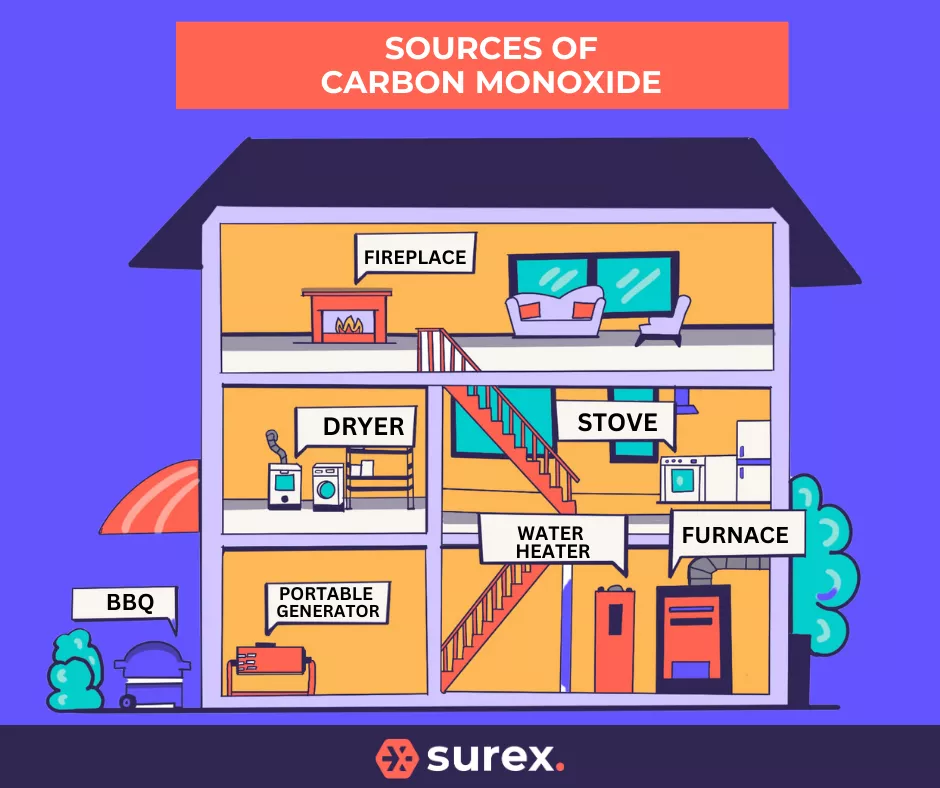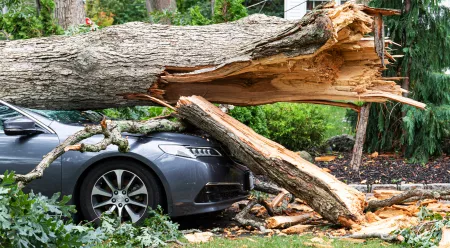Winter is coming... and with it, the looming threat of a deadly carbon monoxide leak.
The risk of exposure to carbon monoxide indoors is far greater in colder months of fall and winter in Canada. Carbon Monoxide (CO), often known as the “silent killer,” is produced through indoor heating appliances that run on burning fuels such as propane, natural gas, heating oil or wood.
Appliances like gas furnaces, hot water heaters, fireplaces, wood or pellet stoves, gas stoves, vehicles, generators and heaters can produce carbon monoxide gas. Incomplete burning of fuel caused by faulty burners or clogged chimneys can cause this invisible and odorless gas to leak.
CO poisoning is a leading cause of unintentional poisoning deaths in Canada, with an estimated 300 deaths and 200 hospitalizations related to CO exposure each year.
Fun Fact: In Ontario and British Columbia, November 1-7 is observed as Carbon Monoxide Awareness Week.
Are carbon monoxide detectors legally required in your home?
The National Building Code of Canada (NBCC) requires all buildings with residential or care occupancy that have a fuel-burning appliance or a storage garage, to have mandatory CO alarms installed. In most provinces, this code has been adopted by the provincial or local fire bylaws.
It is advised to always check your local bylaw or the latest provincial code for specifics.
The dangers of carbon monoxide
Exposure to the poisonous carbon monoxide gas can turn fatal quickly because you cannot see, smell or taste it. It can cause flu-like symptoms such as headaches, nausea, dizziness, shortness of breath, confusion, drowsiness, as well as loss of consciousness, coma and death.
People who are most at risk to this exposure are infants, small children, pregnant women, elderly people and persons with heart or lung problems. People with preexisting conditions and comorbidities are likely to have varied responses to CO exposure. As we approach the winter months that bring snowstorms and power outages, the risk of CO leak and exposure increases significantly too.
The legal requirements
The Ontario Building Code requires the installation of CO alarms in homes and other residential buildings like condos built after 2001. Ontario’s Fire Code requires CO alarms adjacent to each sleeping area in any residence so that the device is audible. Local authorities can inspect and enforce compliance with the law. If you are a landlord in Ontario, you’re responsible for installing and maintaining CO alarms in your rental units and testing alarms regularly to make sure they’re in working condition. It is also illegal for tenants to remove batteries or tamper with CO alarms in their rental accommodations.
Alberta Building Code mandates residents to install CO alarms in their homes next to every sleeping area or hallway outside bedrooms, while B.C.’s Fire By-law requires alarms in every dwelling, new or old. Manitoba, Nova Scotia, Nunavut and Yukon also follow NBCC/NFCC provisions, with Yukon specifying mounting and hard-wiring details. Quebec's Building chapter of the Safety Code recommends selecting CAN/CSA-6.19 compliant devices; New Brunswick, P.E.I., and Saskatchewan also tie requirements to their adoption of national codes.
For best protection against CO poisoning, Health Canada advises installing additional alarms on every floor, testing the alarm every few months for battery replacements and replacing units according to expiry date.







